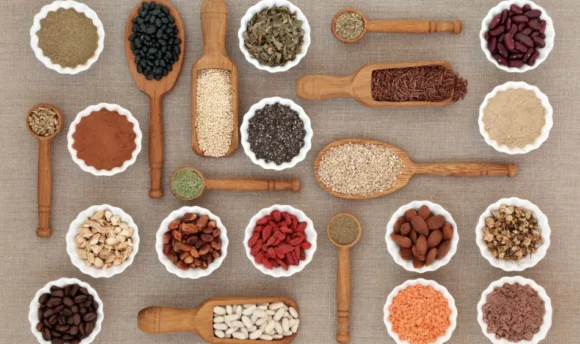Is Catfish Healthy? Nutrition Facts and Health Benefits
Catfish is a lean fish. Most people include it while on a weight loss journey, but is it a healthy option? Here, we’ll check out the benefits and a nutritious recipe for you to try.

Catfish is a well-known fish due to its low cost and high nutritional value. Since they can thrive in almost any environment, it makes them one of the most sustainable protein sources.
Eating fish can bring several benefits, like supporting muscle mass or increasing fullness levels. So, why should catfish be one of the options you consider adding to your diet?
Here, we’ll go over the nutrition facts, benefits, disadvantages, and a delicious way to make catfish you’ve never tried before.
Is Catfish Healthy?
Yes, catfish is a healthy option. It is high in protein, which can support muscle mass. Additionally, it is also low in fats, making it a great option for those who want to lose weight.
What makes this a healthy option is its high omega-3 fatty acids, which can help reduce inflammation.
But keep in mind that farm-raised catfish tend to be lower in fatty acids than wild-caught. So, if you want to have the healthiest version of catfish, make sure to stay away from farm-raised catfish, although it would be cheaper than wild-caught.
What Is Catfish?
Catfish is a type of freshwater fish. It mostly feeds from vegetable sources like algae, but in some cases, it might feed on smaller fish or insects.
There are several types of catfish. However, only a few are available for commercial use. Some examples you might find at your grocery store are flannel catfish, Indian butter catfish, and channel catfish, which are some of the most common types.
One thing that makes them stand out is their capacity to live in extreme environments. For example, they can thrive in scalding hot waters and freezing temperatures.
5 Health Benefits of Catfish
Catfish is a healthy source of protein. But what are the health benefits you might obtain from including this food in your diet?
#1 Supports muscle mass
Protein is crucial for the human body because it works as the main muscle-building block. Thus, high-protein options like other commonly consumed fish (tilapia, salmon, tuna), chicken, or cottage cheese can help promote muscle mass.
In fact, it is recommended to consume 0.54–0.82g of protein per pound of body weight. This means that someone who weighs 180lbs should consume 97–147g of protein per day.
Catfish can make it easier to reach your protein requirements to help preserve muscle mass or increase it since it has 16.4g of protein per 100g.
#2 Aids in weight loss
Catfish is a lean source of protein with a low-calorie content, which makes it a good option for weight loss.
Evidence suggests that a high-protein diet can increase metabolism, helping you burn more calories and increase fullness levels allowing you to reach a caloric deficit.
#3 Helps reduce inflammation
Catfish has a good omega-3 fatty acids content. These are essential fatty acids the body cannot produce. So, they need to come through diet.
Chronic inflammation can lead to more body aches, trouble losing weight, and problems with digestion, and research shows that omega-3 fatty acids can help reduce it.
So, adding catfish, which is high in omega-3 fatty acids, can definitely improve overall health.
#4 Supports eye health
Thanks to its high omega-3 content, catfish can help support eye health.
Omega-3 fatty acids are a structural component in the retina. Studies show that a lack of certain types of omega-3, like DHA, can increase the risk of eye disorders.
In addition, it seems that consuming foods that are high in omega-3 can help decrease the risk of macular degeneration.
#5 Promotes brain health
Finally, catfish filets can also improve brain function due to their fatty acid content.
Omega-3 fatty acids are crucial during pregnancy since they help in the brain development of the baby. Also, it can help improve cognitive function and improve mood.
Disadvantages of Eating Catfish
While catfish is a good source of protein, there are still some disadvantages to eating it. Here are some of the disadvantages of eating this fish:
- It might contain toxins and bacteria – catfish can contain mercury, bacteria, or toxins like per- and polyfluoroalkyl, which can cause health issues.
- Farm fish might be lower quality – compared to wild fish, it might have less healthy fats and higher antibiotic content.
- Wild-caught is expensive – even though it has a higher nutritional value, it can be more expensive, which might be less affordable.
Nutrition Facts of Wild Catfish
As we’ve seen throughout the article, catfish is a good source of protein. But what are other nutritional facts we need to know?
Catfish is low in fats, low in calories, has zero carbs, and is high in certain nutrients.
The following table gives you information on 100g of wild catfish to help you understand its nutritional benefits.
Nutritional value per 100g
| Calories (kcal) | 95 |
| Carbs (g) | 0 |
| Fiber (g) | 0 |
| Sugar (g) | 0 |
| Fats (total) | 2.82 |
| Protein (g) | 16.4 |
| Cholesterol (mg) | 58 |
Source: https://fdc.nal.usda.gov/fdc-app.html#/food-details/174186/nutrients
Low in calories
One of the biggest benefits of catfish is that it is low in calories. In 100g of catfish, you only get 95kcal. That’s not too many calories contemplating its high nutrient profile.
High in protein
Protein plays an essential role in the body. As we previously saw, it can help support muscle mass. While the amount of protein varies according to weight, a good recommendation is to consume 20–30g of protein per meal, even snacks. Catfish can make it easier to reach this amount.
Low in fats
If you are looking to replace wild-caught salmon with something leaner, catfish is the best option. Thanks to its low-fat content, it is an excellent option for losing weight. Also, it is ideal for those with heart problems since the little fat it does contain comes from essential fatty acids.
Zero carbs
Since catfish contains zero carbs, it is an excellent choice for those following a keto diet. When you significantly reduce the glucose in the body, it can promote a state of ketosis.
Keep in mind that if you are following a keto diet, you have to consume enough healthy fats, and catfish is very low in this nutrient.
Rich in minerals and vitamins
Catfish is a good source of vitamin B12, selenium, phosphorus, and thiamine. They are essential to keep the body healthy and can help boost the immune system.
Catfish vs. Swai Fish
We’ve seen that catfish is a good source of protein. However, how does it compare to other wild fish?
The following table compares catfish vs. swai fish.
| Features | Catfish | Swai Fish |
| Benefits | It’s low-fat and low calorie content makes catfish an excellent option for those looking to lose weight. It has 95kcal per serving and only 2.82g of fat. | It is lower in calories and fat compared to catfish. It only has 62kcal per serving and 1.3g of fat. However, it has 3g less protein than catfish. |
| Pros | Low in caloriesHigh in protein Low in fatsContains omega-3 fatty acidsEasy to cook | Low in calories High in proteinLow in fatsContains omega-3 fatty acidsEasy to cook |
| Cons | Might increase risk of food poisoningEating too much can cause mercury poisoning | Could lead to food poisoning. Has slightly higher mercury levels than catfish |
| Taste | Slightly sweet and mild flavor | Neutral in flavor, with a somewhat sweet flavor |
Healthy Catfish Recipe
Since catfish has a low-fat content, it can be a bland option. However, this doesn’t always have to be the case. You can create delicious-tasting recipes.
Here is a baked herb catfish recipe that is worth trying!
Ingredients
- 4oz of catfish
- ½ tsp garlic powder
- 1 tsp minced parsley
- ¼ tsp paprika
- ⅛ tsp dried thyme
- ⅛ tsp dried oregano
- 1 tbsp lemon juice
- ½ tsp melted ghee
Directions
- Preheat the oven to 325ºF.
- Combine all of the dried ingredients.
- Coat the catfish filet with the dried herb mix. Make sure to coat it thoroughly.
- Place the filet on a baking sheet.
- Mix the lemon and the ghee and drizzle over the filet.
- Cook for 15–20 minutes.
If you want to boost the nutrient value of the plate, you can always add some fish eggs on the side. Fish eggs are high in omega-3, vitamin B12, and vitamin D.
Make sure you add vegetables on the side to complete the dish.
If you want to learn more about making healthy recipes, you can check different nutrition apps to help create a healthy recipe bank.
FAQs
No, catfish is not fattening. It only has 95kcal per 100g, making it a great option for losing weight. Also, it is high in protein and low in fat. There is no better combo to lose weight.
No, catfish only has 2.82g of fat per 100g, making it a very low-fat fish.
No, while they are related, they are completely different fish. They have different flavors, textures, and nutritional value. In fact, swai fish is lower in calories and fats compared to catfish.
Yes, since catfish are low in calories and high in protein, it’s an ideal option for weight loss. A high protein food can help increase fullness levels, making reaching a caloric deficit easier.
A Word From a Nutritionist
How the fish is raised can affect its nutritional profile. And it is all related to the type of diet they have.
For example, farm-raised catfish are usually fed soy, corn, or wheat products. On the other hand, wild fish usually feeds on algae, smaller fish, or any other aquatic plants.
As a result, you can get a completely different profile. Research shows that wild-caught can have a higher omega-3 content compared to farm-raised.
Additionally, farm-raised fish might be higher in antibiotics and, in some cases, medication to help them grow and remain healthy.
So, whenever possible, make sure to choose wild over farmed.
Conclusion
Catfish is a healthy protein option that is low in calories. High-protein foods can help increase satiety which can help prevent snacking and make you have smaller portions, which can help you with weight loss.
Additionally, the small fat content it has comes from healthy ones. Making it a great option for those with an increased risk of heart disease.

















































 Select your language:
Select your language: 









